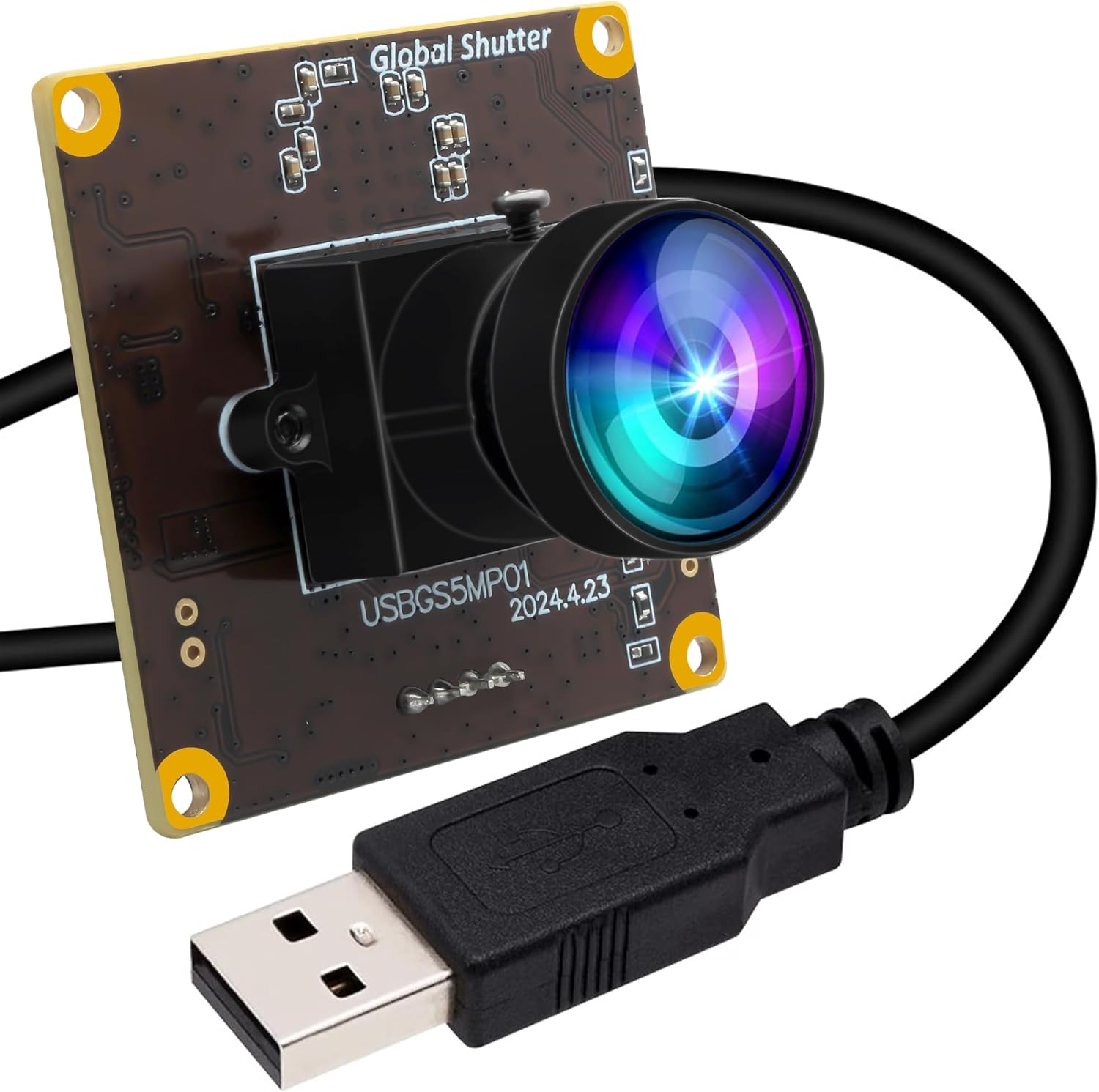To start out with, let’s discuss what for many of you is probably the “elephant in the room”: It’s $167 for a USB CAMERA?
Allow me to put that into just a little perspective. The only other place in the market you can get a Global Shutter equipped camera is the Sony Alpha 9 III, which is currently clocking in around $6,000. That’s right, not $600, $6,000.
Suddenly, $167 bucks doesn’t sound nearly so bad, does it?
Now, of course, this isn’t going to give you all the capabilities that the A9 III has, it is just a USB camera after all, whereas the A9 III is “the whole enchilada”, so to speak. But, what you DO get with this ELP is the most important (and the most expensive) part, the Global Shutter.
But what IS a “Global Shutter”, you might be wondering. That’s easy, most cameras, be they DSLR or mirrorless, work in the same fashion, where an image is processed one line at a time. In a DSLR, this occurs as a result of 2 curtains, a front and a rear, traveling in front of the image sensor only allowing a line to be exposed at a time. In a mirrorless camera, it happens simply because that’s how they’re programmed and designed to work. This is called a “rolling shutter”, and has been the de-facto standard on cameras for a very long time.
The Global Shutter, on the other hand, exposes the ENTIRE image at once, rather than a line at a time.
Ok, you’re thinking. So what? Where will I actually see this played out? Easy, when you’re taking video of moving subject, especially rapidly moving subjects. Why? Have you ever seen video of a 3-D printer working, and seen odd “artifacts” where it seems like the print head will almost disappear and reappear in the next frame when it moves? This is an effect of the rolling shutter capturing an object in motion. Using this Global shutter camera pointed at your 3-D printer, those “tearing” video artifacts are a thing of the past, because the entire frame is exposed at once.
By matter of fact, expensive digital movie cameras costing many tens of thousands of dollars have global shutters, and the Sony A9 III is the first to put this technology in the hands of the consumer videographer at $6,000. And also by matter of fact, this is pretty much the only place you’ll find this technology in a USB camera form, at the frankly RIDICULOUS price of $160. This is so worth the asking price, and the first time you set this up to capture some 3-D prints (or other rapid motion stuff) and see the artifact-free frame-by-frame crystal clear quality, you’ll understand what a steal this is. I mean, or you could go drop $6k on the Sony. I mean, lol. Seems an easy choice.
The highest resolutions this will do are a bit low by “4k standards” at 2592×1944@50fps 2592×1440@60fps (personally, I think the 1440 / 60fps is more useful), but is still plainly better than “plain-old 1080p”, so I’m not terribly stressed about the lack of 4k support. Especially at the price.
Do I recommend it? Absolutely. You won’t get a global shutter camera cheaper anywhere. Does it have everything I wish it had? No, not quite. They make a much better zoomable lens for these little USB board cameras which would be an excellent upgrade for this camera, and so would 4k resolution as well, even if it was 4k@30fps. But, once again, I find complaining difficult at this asking price. Especially standing in the shadow of the A9 III. This is an easy 5 stars. Excellent image quality, nearly universal compatibility, and that rocking Global Shutter make it a no-brainer for less then $200.











Leave a Reply